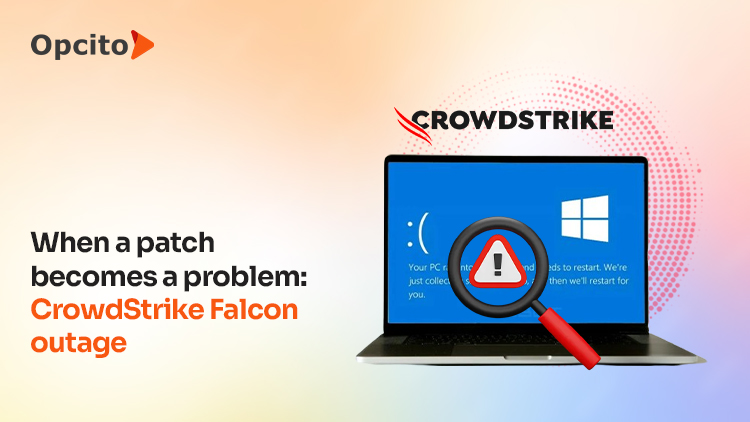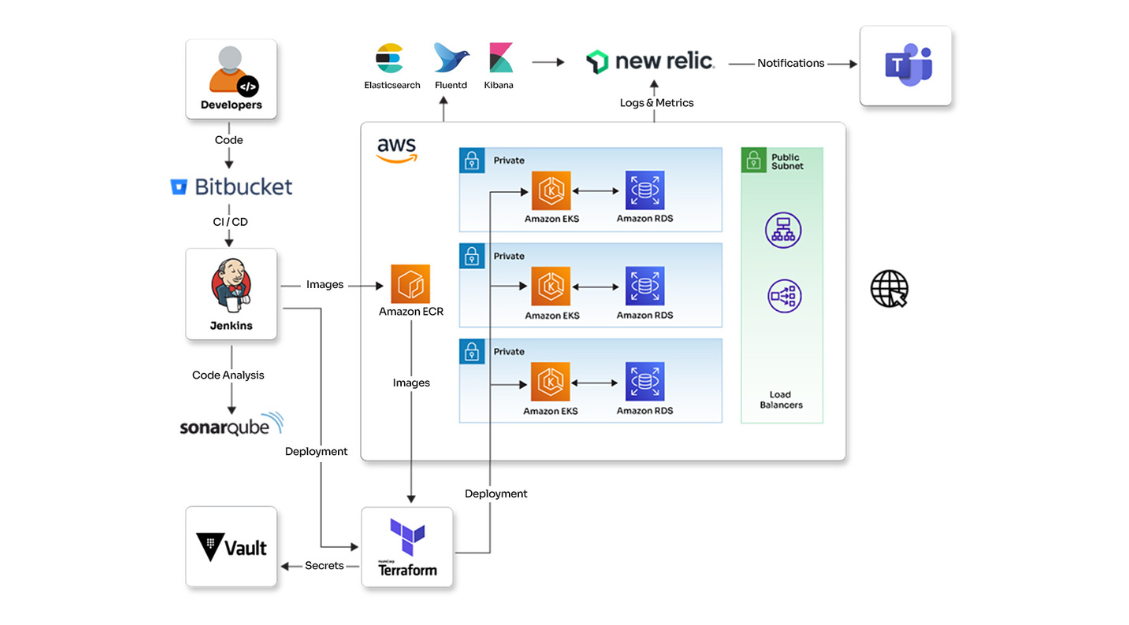A step-by-step guide to writing a Kubernetes Operator in Golang
Prerequisites
- Basic Knowledge of Kubernetes: Familiarity with pods, deployments, and CRDs
- Golang Development Environment: Go version 1.18 or later
- kubectl and Minikube: For deploying and testing your operator
- Operator SDK: A CLI tool for scaffolding and building Kubernetes Operators
As a Kubernetes user, you’ve likely experienced its power in managing stateless applications. With Kubernetes, you can easily deploy, scale, and manage these applications without much manual intervention.
Building high-performance web applications with WebAssembly
In the previous blog, we explored the basics of WebAssembly and how it's revolutionizing web development. Now, let's dive deeper into the practical aspects of building high-performance web applications with WebAssembly.
Enhancing security solutions for a Kubernetes-based security startup
See how Opcito helped a Kubernetes-based security startup with improving API insights within a Service Mesh-based Kubernetes cluster
Engagement details
Opcito partnered with a leading Gen-AI Powered Zero Trust CNAPP to address a complex set of challenges related to security and observability. The platform lacked the robustness of alerting capabilities to ensure prompt detection and response to threats. The customer aimed to establish robust observability for APIs within their Kubernetes cluster, particularly those operating within a Service Mesh, and also sought to expand the capabilities of their SaaS platform to seamlessly integrate with a variety of security solutions. To ensure the solution's success, Opcito integrated advanced security practices to enhance security alerting and real-time API observability.
Technologies
- Kubernetes
- Docker
- Golang
- Python
- eBPF
- AWS
- GCP
- WASM
Benefits
- Enhanced observability of API calls
- Provisioned continuous security integration
- Improved monitoring and alerting
Subscribe to our feed
Get clean object-based responses from LLMs with LangChain
Have you ever felt the frustration of getting an LLM response that's almost what you need, but still requires a lot of manual work to transform it into something usable? You're not alone. We've all been in a situation where you ask a language model a question, and it spits out a string of text. It looks promising, but the real work is just beginning. You have to manually parse that text, extract the relevant information, and then shape it into a format that your application can understand.
What is WebAssembly? An introduction to Wasm
I've built web applications for over a decade, and JavaScript has been my trusty tool. However, as web apps grew more complex and performance-critical, I started feeling some limitations. Fortunately, I discovered WebAssembly, aka Wasm, a game-changer in my line of expertise. It allowed me to compile code written in languages like C++, Rust, or Go into a format browsers can understand. This opened a world of possibilities, enabling me to build web applications that are faster, more efficient, and more secure.
Unit testing React apps with TypeScript, Vite, Jest, Redux toolkit, and Axios
Efficient and reliable applications can do wonders for your business. Unit testing can be the key to building React applications that are both efficient and reliable. Testing individual components in isolation allows you to catch and fix bugs early, improve code quality, and accelerate your development process. This guide walks you through configuring unit tests for a React application using Jest, with TypeScript support and Vite as the build tool. We’ll also cover mocking Axios for API calls and testing Redux slices with @reduxjs/toolkit
How AI can do wonders to your Kubernetes
Kubernetes has fundamentally reshaped the landscape of container orchestration, offering a robust and scalable platform for deploying and managing complex applications. As we approach KubeCon 2024, it's evident that Kubernetes has firmly cemented its position as the industry standard. However, as Kubernetes environments grow in scale and complexity, traditional management methods often struggle to keep pace. The sheer volume of configurations and the dynamic nature of containerized workloads often overwhelm users.
Persistent storage for Strapi schema changes on Kubernetes deployment
Strapi, a popular open-source headless CMS built on Node.js, streamlines content management for developers of all skill levels. It offers flexibility by allowing connection to preferred databases, frameworks, and static site generators, while also enabling content creation from any device. However, when working with Strapi in a Kubernetes environment, schema changes made through the admin panel can lead to data loss during pod restarts. This blog explores the challenges and proposes a solution for persistent storage of Strapi schema changes.
The future of Kubernetes: Trends and predictions for 2025
As we gear up for KubeCon and CloudNativeCon North America 2024 in Texas, it's time to take a look at the shifts reshaping the Kubernetes landscape. The European edition earlier this year offered a glimpse into the future, and it's clear that 2025 promises to be even more transformative. From serverless Kubernetes to AI/ML integration and the rise of WebAssembly, the Kubernetes ecosystem is evolving at a rapid pace. As organizations seek to optimize their cloud-native strategies, these trends are becoming increasingly essential.
Guide to upgrade an EKS cluster from 1.30 to 1.31 using Terraform
It's time to upgrade your EKS clusters! Following up on my previous blog about upgrading an EKS cluster from 1.29 to 1.30, this highly anticipated Kubernetes 1.31 release, nicknamed Elli, brings new features and improvements. If you're worried about navigating the upgrade process alone, don't worry. This blog will guide you through a smooth and efficient upgrade using Terraform, ensuring your workloads transition seamlessly into the Elli era.










